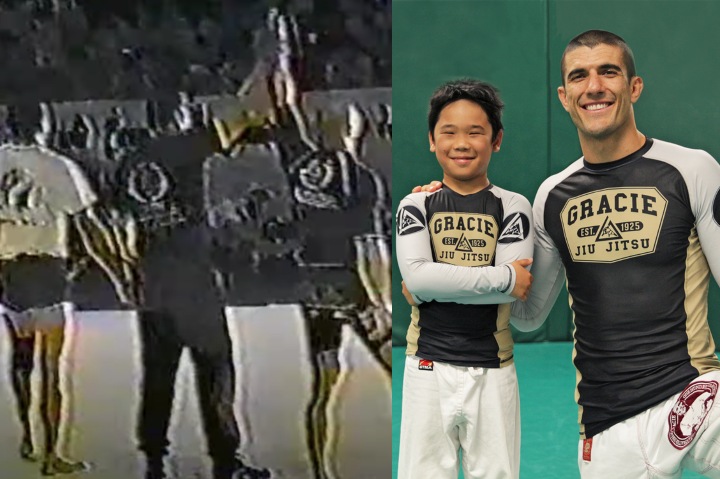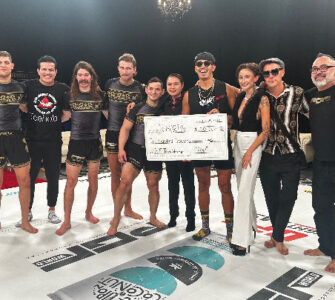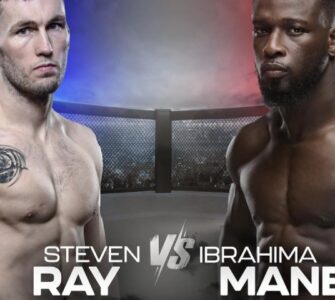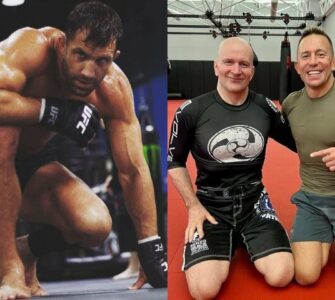The rash guard and compression gear are a staple in no-gi grappling but it’s benefits of use with the gi is often debated. Someone people feel less restricted without a rash guard, and absolutely refuse to wear one while rolling in the gi. Many believe that the benefits of wearing a rash guard whenever you are rolling far out weigh the freedom you feel without it.
Breaking Muscle provided some research on the recovery benefits of wearing compression gear:
“Recovery is an area where athletes are constantly looking to improve. There are many methods used for recovery, and now compression garments have become increasingly popular with athletes because of their purported benefits. A recent study to be published in the Journal of Strength and Conditioning Research investigated whether wearing compression garments during recovery improved subsequent repeated sprint and 3 km run performances.
….
While previous studies have investigated the effects of compression garments, this is the first known study to compare the effect of wearing a compression garment versus a similar non-compression garment on subsequent repeated sprint and endurance performance. The results confirm the beneficial effect of wearing compression garment during recovery and suggest that wearing those garments may be an effective method of recovery for rugby players. Although the study was performed on rugby players, there is enough evidence to support the claims that compression garments could benefit recovery for a variety of athletes.”
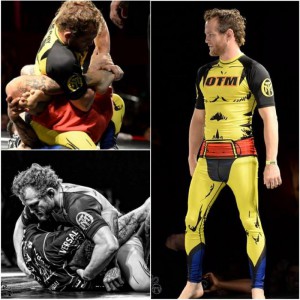
Related:
Gordon Ryan Tells Joe Rogan About Why John Danaher Wears Rash Guards & Fanny Packs Everywhere He Goes
So when did rash guards start being used in Brazilian JIu-Jitsu and grappling?
According to BJJ legend and ADCC veteran Baret Yoshida, Egan Inoue used the first jiu-jitsu rash guard in nogi competition at ADCC 1999.
Egan competed against Renzo Gracie and showed up wearing a rash guard and surprised everyone. Up to that point grapplers would either wear Tshirts and compete without a shirt in submission grappling tournamnents.
Baret Yoshida stated:
“Our whole team had them back than.Egan was a surfer and knew the O’neal surf manufacturer made them for adcc 1999.
I used mine in absolute division against Garth Taylor that year.
No one else anywhere back than used rash guards in jiujitsu.”
After the bjj gear companies at the time started making rash guards: Hot Blood, Vitamins and Minerals, Hunter, Bad Boy etc..
Here is the match which was also one of the biggest upsets in Jiu-Jitsu and started off the rash guard as a piece of equipment for Jiu-Jitsu:
Now let’s look at rash guards in Jiu-Jitsu and determining the difference between a rashguard and a compression shirt.
There are several reasons why you can advocate the use of a rash guard under the gi.
- Muscle Compression may prevent injury. There have been several studies on how wearing a rash guard after rolling can speed up injury recovery due to the compression of the muscles. Just as there are compression braces that reduce injuries of the knees and ankles, rash guards may also reduce the occurrence of minor acute injuries.
- Reduce the spread of bacteria. In the gi, it is common practice to open the gi in order to destabilize your opponent, setup for gi chokes, or to use as leverage for a pass. Additionally, during intense rolling, the gi will naturally open, exposing your opponent’s chest. This exposes as much as 40% more skin surface area and increases the change of bacteria exchange exponentially.
- Wick away moisture for better grips. I find myself resetting my gi and tieing my belt every 10 minutes of rolling (or every other round). The more I roll, the more sweat accumulates, increasing the chances of me transferring that sweat to my hands in between rounds. Next thing I know, I try to take advantage of my opponent placing their palm on the ground, and as soon as I grab their wrist for the Kimura, they slip right out. Sure being sweaty can work to our benefit but we touch our bodies just as much as our opponent’s. Wearing a rash guard, will help to alleviate some of that sweat transfer.
- Prevents mat burn. This is one of the original purposes of wearing a rash guard. When rolling no-gi, skin contact on your typical BJJ mat can cause friction scars. For people like myself, who has had several surgeries, the likely hood of mat burn is pretty high. Though the gi provides a barrier between the mat and your skin, it can worsen friction from rolling. The weave patterns on gi’s are designed to be strong and allow for griping, but it also creates a lot of friction. This is especially true for elbow passes or any other movements that require you to plant part of your arm on the mat. Wearing a rash guard can divert some of that friction to the rash guard, or even displace it all together, as it’s surface is a lot smoother than your skin.
Difference between a rashguard and a Compression shirt?
With that said, rash guards and compression shirts are not the same. In fact, all rash guards are not created equal. Typical compression shirts are made of 4 panels and are not designed for constant contact. As a result, the movements are restricted, and the shirt is more likely to ride up over your abdominal while rolling. Good rash guards are made from a minimum of 6 panels. The stitching is very durable and is built to resist sleeve pulls and stretching.
Unfortunately, IBJJF and Naga do not allow a rash guard under the gi for competitions.
Source: Southern Jiu-Jitsu

